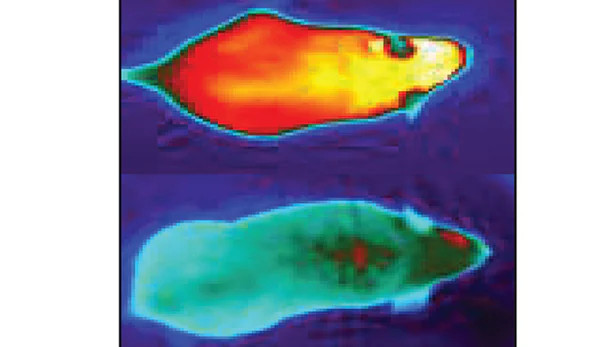Scientists identify genes capable of burning brown fat
In fact there are some types of fat - white fat, which contain excess energy, and brown fat, which the body uses to keep warm.
Currently, researchers at the Salk Institute have identified proteins that allow brown fat to release energy, opening a new path to treating obesity and related diseases.
Scientists used to think that only babies have brown fat and use it as a way to keep warm. But it was discovered in adults in 2009.
In it, brown fat cells have more mitochondria - which are the components of cell energy production compared to white blood cells, and this is what allows them to burn energy more efficiently. Scientists have been searching for an object called "fat transducer", which converts white fat to brown.
 Scientists identify genes capable of burning brown fat Picture 1
Scientists identify genes capable of burning brown fat Picture 1
Later, Salk scientists studied how to maintain brown fat even when the body is not cold. The team looked at the role of a gene called the gamma receptor (ERRγ) related to estrogen, which is very active in brown fat.
The team found that brown fat cells continuously expressed ERRγ activity, while white fat cells failed to express it. The researchers also studied genes other than ERRγ that could also be activated and linked to brown fats.
Michael Downes, co-author of the paper, said: "We have discovered factors that are involved in protecting against cold and brown fat formation."
To test the difference between white and brown fat cells, the researchers examined mice that lacked the complete ERRγ gene. They found that in these mice, brown fat cells were not much different from normal white cells and mice could not regulate their body temperature in cold conditions.
"This not only enhances our understanding of how the body responds to the cold environment but can also provide new insights related to controlling the amount of brown fat in the body, which is relevant. to obesity, diabetes and fatty liver disease, "Ronald Evans, author of the study.
The study is published in Cell Reports.
You should read it
- Gen make you more friendly
- Detecting many genes involved in a good immune response to flu vaccines
- Officially found bad genes and harmful variants related to brain aging
- Genes play an important role in children exploring the world in a visual way
- Warning: Three more genes appear to cause hypertension
- American science officially found 42 genes that cause gum disease, periodontal disease
- Finding a network of 320 genes causes epilepsy
- The study found four genes involved in cysts in the liver and kidneys
- A total of more than 100 human memory-related genes have been identified
- Science discovered the role of foreign genes in inflammatory bowel disease
- New drugs can prevent genes that cause cancer
- Science uses light to control gene expression






 Hydrogel can help heal diabetes ulcers
Hydrogel can help heal diabetes ulcers Magnetic nanoparticles are designed to prevent internal bleeding
Magnetic nanoparticles are designed to prevent internal bleeding Supplementing Vitamin B12 may reduce the risk of diabetes
Supplementing Vitamin B12 may reduce the risk of diabetes India found anti-cancer properties in 3 rice varieties
India found anti-cancer properties in 3 rice varieties Sensors mounted on teeth track what you eat
Sensors mounted on teeth track what you eat Scientists develop brain scanners like helmets
Scientists develop brain scanners like helmets